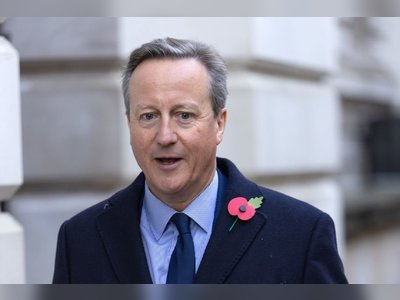UK Budget 2025: Markets Brace as Chancellor Faces Fiscal Tightrope
Investors watch Chancellor Rachel Reeves’s Autumn Budget closely amid borrowing stresses and self-imposed fiscal rules
Markets in the United Kingdom are gripping with anticipation ahead of the Autumn Budget, as Chancellor Rachel Reeves prepares to tackle an estimated £20–35 billion fiscal shortfall while adhering to stringent fiscal rules introduced last year.
The rules require day-to-day spending to be covered by tax receipts and public debt to fall as a share of national output by 2029–30.
Despite the chancellor’s insistence that these rules remain “iron-clad”, bond markets have grown cautious.
Yields on the benchmark ten-year gilt recently surged after the chancellor reversed plans to raise income tax, prompting concern over the government’s revenue strategy and borrowers’ willingness to lend.
Analysts warn that any perceived deviation from the self-imposed fiscal discipline could undermine confidence in the United Kingdom’s borrowing programme, forcing higher interest payments and weakening sterling.
With borrowing costs elevated, the budget is viewed as a pivotal event for restoring credibility.
Investor attention is also focussed on whether the budget will demonstrate a credible plan to boost growth and contain inflation, which could in turn influence the Bank of England’s ability to cut interest rates later this year.
A budget overly skewed toward tax rises without clear growth measures may send negative signals to markets about the United Kingdom’s economic trajectory.
Market strategists argue that tax rises appear unavoidable, but say they must be coupled with tangible spending controls and growth initiatives.
The government faces pressure to show that revenue increases will not stifle investment or consumption, particularly as business investment surveys highlight a sharp drop in confidence among firms.
As the 26 November budget date approaches, the chancellor’s ability to deliver a package that aligns with market expectations and fiscal discipline will be critical.
The outcome may set the tone for the United Kingdom’s borrowing costs, economic growth prospects and the strength of sterling going into next year.
The rules require day-to-day spending to be covered by tax receipts and public debt to fall as a share of national output by 2029–30.
Despite the chancellor’s insistence that these rules remain “iron-clad”, bond markets have grown cautious.
Yields on the benchmark ten-year gilt recently surged after the chancellor reversed plans to raise income tax, prompting concern over the government’s revenue strategy and borrowers’ willingness to lend.
Analysts warn that any perceived deviation from the self-imposed fiscal discipline could undermine confidence in the United Kingdom’s borrowing programme, forcing higher interest payments and weakening sterling.
With borrowing costs elevated, the budget is viewed as a pivotal event for restoring credibility.
Investor attention is also focussed on whether the budget will demonstrate a credible plan to boost growth and contain inflation, which could in turn influence the Bank of England’s ability to cut interest rates later this year.
A budget overly skewed toward tax rises without clear growth measures may send negative signals to markets about the United Kingdom’s economic trajectory.
Market strategists argue that tax rises appear unavoidable, but say they must be coupled with tangible spending controls and growth initiatives.
The government faces pressure to show that revenue increases will not stifle investment or consumption, particularly as business investment surveys highlight a sharp drop in confidence among firms.
As the 26 November budget date approaches, the chancellor’s ability to deliver a package that aligns with market expectations and fiscal discipline will be critical.
The outcome may set the tone for the United Kingdom’s borrowing costs, economic growth prospects and the strength of sterling going into next year.










